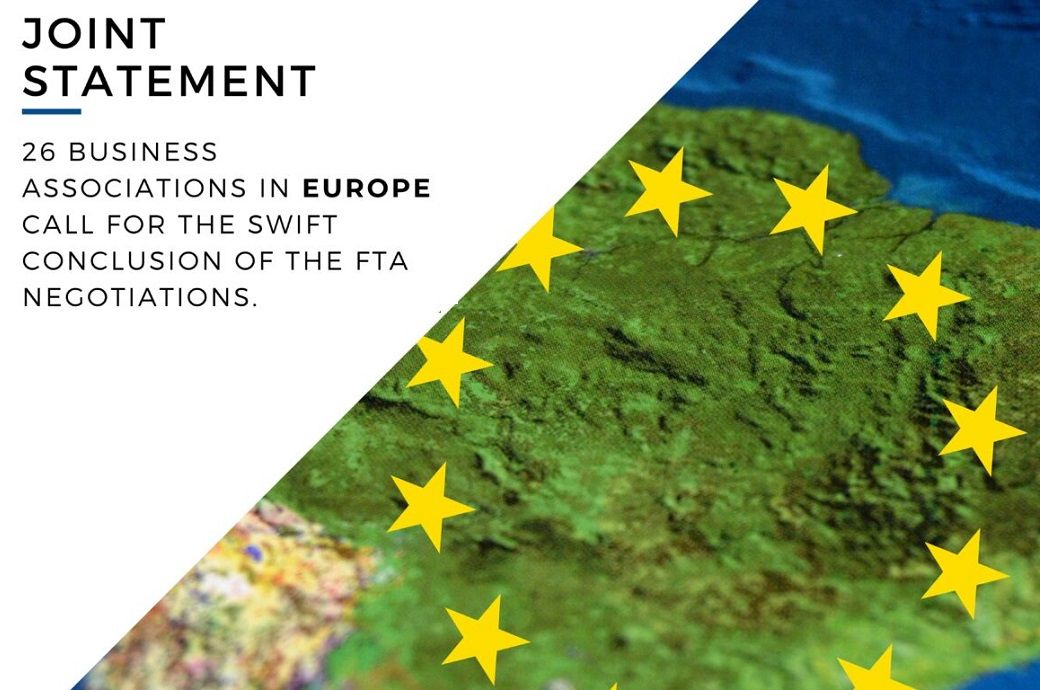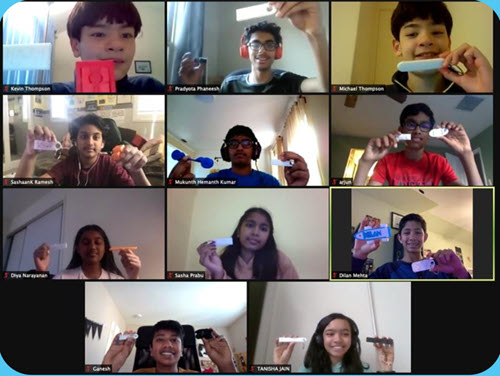January 14, 2022 — The Steam Foundation and MakerBot have teamed up to bring 3D printing to more students across the U.S. Founded by Aadhav Prabu and Akshar Raikanti, The Steam Foundation is a California-based nonprofit with a mission to make STEAM education equally accessible to all students in kindergarten through 12th grade. The organization, which is also run by a team of students, offers free workshops that teach 3D printing, robotics, graphic design, and coding to students as well as programs to help bring 3D printing into schools.
Prabu and Raikanti are currently juniors at Dougherty Valley High School in San Ramon, Calif., and have been teaching 3D printing for years. They were inspired to start the organization after seeing how engaged students were in their 3D printing club in middle school.
“When Akshar and I ran the 3D printing club, we saw how excited students were for the chance to use the Replicator+. For some of them, it was the first time they had ever seen a 3D printer. We started The Steam Foundation to give more students the chance to learn about 3D printing,” said Prabu. “We’re fortunate to work with MakerBot, a company which has the same commitment toward 3D printing in education as we do.” MakerBot donated 3D printing equipment and materials to support the Foundation’s mission and programs.
FULL STEAM AHEAD
STEAM education has come a long way over the years, thanks to the tireless efforts of those who have helped broaden access to new technologies, resources, and training for students.
“The goal with the 2021 Fall semester’s 3D printing camp was to create a virtual platform for students from across the country to not just learn about 3D printing, but to interact with one another, to collaborate, to create projects together, and to share these experiences with each other,” said Prabu.
The Foundation was able to do this by launching virtual 3D printing camps, which had 30 students enrolled last semester. The camp is a 10-week deep dive into the fundamentals of 3D printing and 3D design. Last semester, students participated from across 13 states, including California, Texas, Arkansas, Illinois, New York, Washington, and Kansas. Over the course of 10 weeks, students learned about different 3D printing technologies, materials like PLA, ABS, and TPU, design and CAD software, and how to print using the MakerBot Replicator+. Since the program was held virtually, students would send their final designs to the instructor, who would send them to print on the Replicator+, and then mail them to the students. This allowed the students to see and feel their designs physically, which can help them better understand the iterative nature of product design.
Within the first few weeks, students were able to design on Tinkercad and print personalized name tags. Over the next few weeks, students progressed onto more advanced CAD software like Fusion 360 and developed the ability to create more complex designs, like a simple machine with moving parts. The course culminated in a final project that allowed the students to showcase the skills that they’ve honed throughout the semester.
“Last semester was the first time we offered a game incentive–and we were happily surprised with how well it went. The design challenge motivated students to perform better and become more involved with the class and each other. They were really focused on trying to improve their design skills for the contest and it pushed them to try harder,” said Prabu. “We also noticed that they started engaging with each other more, talking through issues and asking each other questions before turning to the instructor.”
The students participated in an open-ended design challenge to create a simple machine with moving parts, such as a pulley, lever, or wheel & axle. Students were able to design any type of machine they wanted, with few guidelines around specific tech and design specs. Students also had to detail their entire process, from design to slicing, and share why they selected their specific print settings. This enabled the students to thoroughly think through and understand their full design process.
3D PRINTING FOR ALL
The Steam Foundation has ambitious plans for the 2022 Spring semester. They’re expanding their virtual 3D printing camps from one to four, with the goal of attracting 4x the number of students from last semester. To do that, they’ve recruited and trained students from previous camps to become the new instructors.
“We’re excited to expand our program and work with some of our past students as instructors. The goal is that, by the end of the 10 weeks, we’ve given them a toolkit with all the basic things that they would need to go further with 3D printing,” said Prabu. “Our hopes are that they can use that toolkit to really build great and advanced projects moving forward. That way, we can continue to inspire more students to get into STEAM education and get more experience with 3D printing specifically.”
In addition to the STEAM camps, The Steam Foundation has additional plans to bring 3D printing into more communities. The Foundation’s Outreach Program focuses on helping under-resourced schools start 3D printing clubs by loaning them 3D printing equipment and resources. The founders believe that with the right support and resources, schools can make a better impact on their students.


:max_bytes(150000):strip_icc()/Health-GettyImages-1472663157-e796d227c3f643af8b3ec2dd328d4ad7.jpg)


